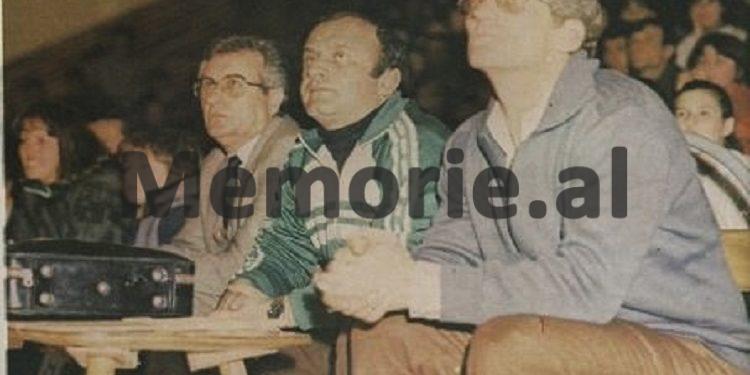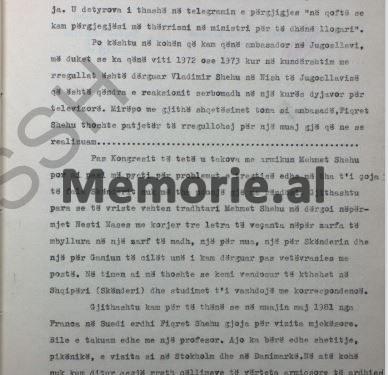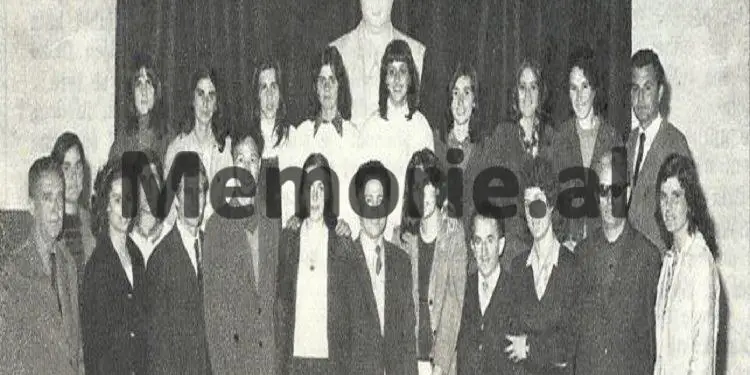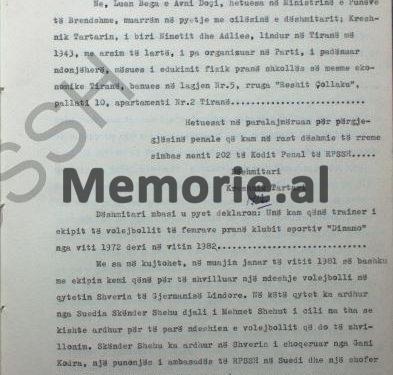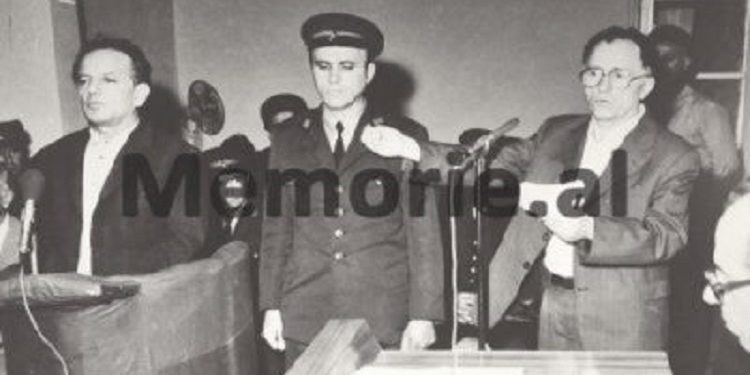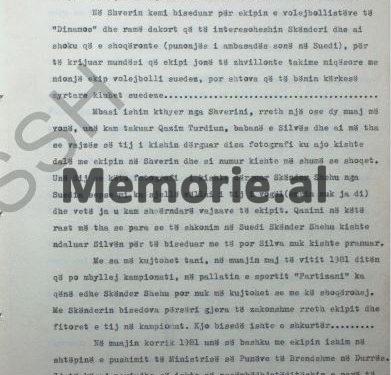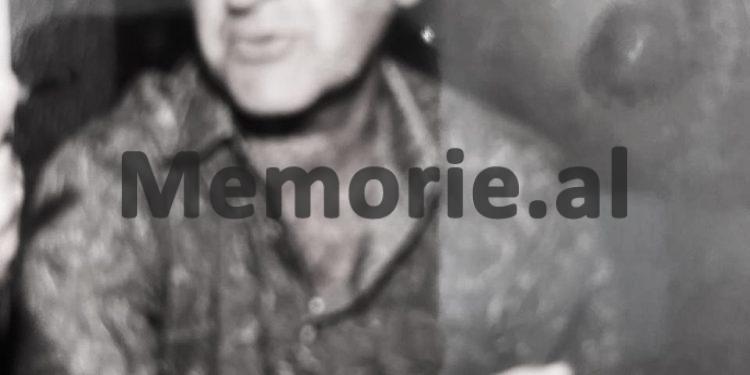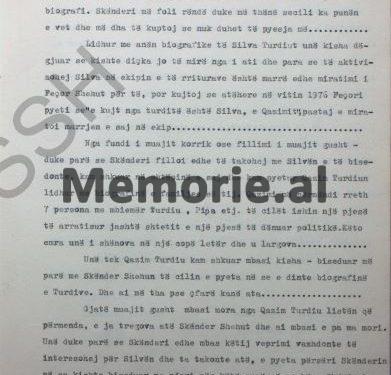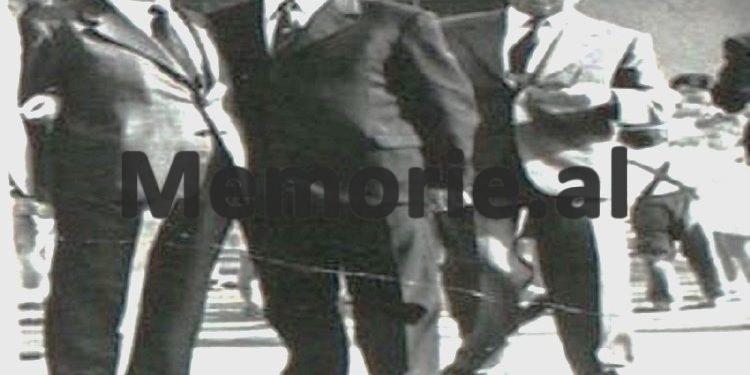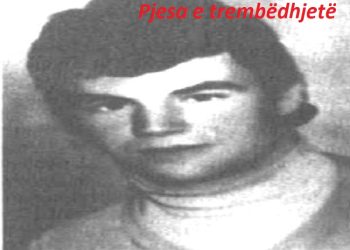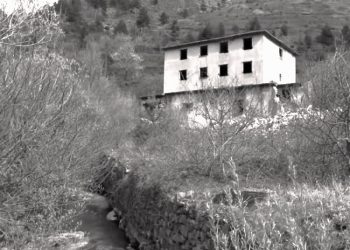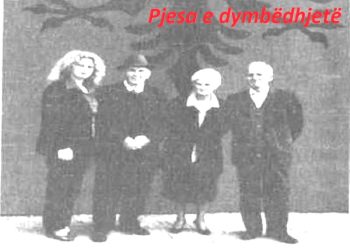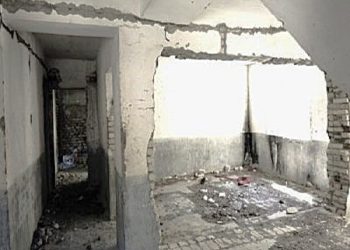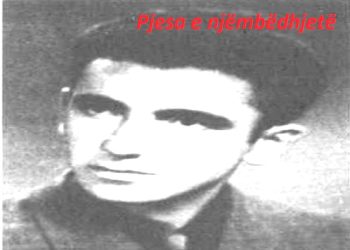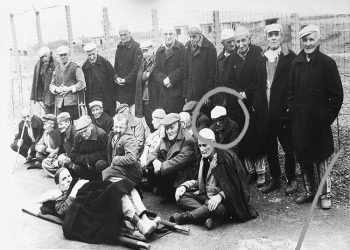By Dashnor Kaloçi
Part thirty-three
Memorie.al / Forty-three years ago, at dawn on December 18, 1981, the Albanian Prime Minister Mehmet Shehu, who had held that position since 1953, was found dead in his bedroom (according to the official version, from a “pistol shot”), in the villa where he lived with his family, at the entrance to the “Block” of the high leadership of the Party of Labour, just a few meters from the building of the Central Committee of the Party of Labour and also from the villa of Enver Hoxha, number 31. Even though more than four decades have passed since that day, considered one of the most serious and also most publicized events of that regime, there is still no clear and accurate version regarding what happened to the former Albanian Prime Minister, Mehmet Shehu, on the night before December 18, 1981! However, even after the 1990s, dozens of testimonies and archival documents have been made public regarding that event, “the murder or suicide of Mehmet Shehu,” which continues to be the subject of numerous debates and discussions, further shrouding the truth around it in mystery!
Starting from this fact, in the context of publishing dozens of testimonies and files with archival documents from the secret fund of the former State Security and the Ministry of Internal Affairs, or even the Central Committee of the Party of Labour, which we have published in these three decades after the collapse of Enver Hoxha’s communist regime and that of his successor, Ramiz Alia, Memorie.al has obtained the voluminous file “of the enemy and poly-agent Mehmet Shehu,” which was extracted from the secret fund of the former State Security at the Ministry of Internal Affairs (now declassified and part of the fund of the Authority for the Information of the Documents of the former State Security), where with a few small exceptions, the vast majority of them has never seen the light of publication and is being published for the first time complete with the relevant facsimiles.
In this file, in addition to the testimonies in interrogation from witnesses or defendants, there are also complete the expert reports of the operational-investigative group that was established immediately on the morning of December 18, 1981, led by Koço Josifi (head of the Investigation Directorate of the Ministry of Internal Affairs of Tirana), forensic doctors Dr. Fatos Hartito and Docent Bashkim Çuberi, the Prime Minister’s doctors, Milto Kostaqi and Llesh Rroku, the criminalist expert from the Central Forensic Laboratory of the Ministry of Internal Affairs, Estref Myftari, assisted by high officials from that ministry, Deputy Minister Xhule Çiraku, head of the Investigation Directorate at the Ministry of Internal Affairs Elham Gjika, and the deputy director of the Tirana Directorate of Internal Affairs, Lahedin Bardhi.
This file also contains the testimonies of the family members of the former Prime Minister Mehmet Shehu, service personnel, and his escort group, as well as all the other people who were summoned and testified about that event.
However, even though we are dealing with archival documents, it should be emphasized that knowing how the communist regime operated before the 1990s, we cannot claim absolute truthfulness regarding what is written there, as not only the witnesses and defendants who have given their testimonies, but also some of the investigators of this case (primarily after the 1990s) have made it known that these were obtained under pressure, intimidation, and torture, both physical and psychological, even further, where some of the investigators wrote them themselves, and the witnesses or defendants simply signed them.
Moreover, for some of the defendants in this investigative process, specifically in the case of Fiqret Shehu, the questions were drafted by Enver Hoxha himself (in his handwriting) and were sent to the investigators through the Minister of Internal Affairs, Hekuran Isai (which we have published with the relevant facsimiles in previous writings), and all of this aimed to enable “the discovery of the hostile group of poly-agent Mehmet Shehu,” in order to justify his suicide (according to the official version)!
In this context of the dictator Enver Hoxha’s paranoia, the following individuals were arrested and placed on trial: Kadri Hazbiu (former member of the Political Bureau of the Central Committee of the Party of Labour and Minister of Internal Affairs and Defence), Feçor Shehu (former Director of State Security and Minister of Internal Affairs), Nesi Nase (former Minister of Foreign Affairs), Llambi Ziçishti (former Minister of Health), Llambi Peçini (former head of the Directorate of Protection and Physical Security of the high leadership of the Party of Labour), Elham Gjika (former head of the Investigations of the Ministry of Internal Affairs), Gani Kodra (former head of the Directorate of Protection and Physical Security of the high leadership of the Party of Labour and the family of Mehmet Shehu), Kristofor Martiro (former investigator of the “hostile group of Beqir Balluku”), Ali Çeno (former head of the escort group of Prime Minister Mehmet Shehu), Xhavit Ismailaga (former barber of Hotel “Dajti”), Idriz Seiti (former Colonel of State Security, head of the Departments of Internal Affairs in Kukës and Lezhë, and head of department in the Ministry of Internal Affairs for the protection, security, and execution of anti-party individuals), Lirim Pëllumbi (former head of the Department of Internal Affairs for the district of Durrës), Qamil Mane Islami (former Colonel in the Directorate of Camps and Prisons of the Ministry of Internal Affairs), Duro Shehu (brother of Mehmet Shehu, former commissioner in the Directorate of Military Aviation of the Ministry of Defence), Fiqret Shehu, the wife of Mehmet Shehu, along with their two sons, Bashkimi and Skënderi, etc.
From this “hostile group,” the first four (Kadri Hazbiu, Feçor Shehu, Llambi Ziçishti, and Llambi Peçini) were sentenced to death and executed, while the others received heavy prison sentences, from which they were only released in 1991, with the exception of Fiqret Shehu, who died in prison in 1987, under mysterious and still unresolved circumstances, as well as the eldest son of the Shehu family, Vladimir, who also died under mysterious circumstances still unresolved, in the city of Gramsh (the official version: suicide), where he had been interned with his family in January 1982. For more information about this event, etc., the documents in question provide details, which we are publishing along with the relevant facsimiles and photos.
Continued from the previous issue
MINUTES OF THE INTERROGATION OF KRESHNIK TARTARI, FORMER COACH OF THE “DINAMO” WOMEN’S VOLLEYBALL TEAM, BY THE INVESTIGATORS OF THE MINISTRY OF INTERNAL AFFAIRS, LUAN BEGA AND AVNI DOÇI
MINUTES
(Of the witness interrogation)
Tirana, December 29, 1982
We, Luan Bega and Avni Doçi, investigators at the Ministry of Internal Affairs, are taking testimony from Kreshnik Tartari, son of Nimet and Adile, born in Tirana in 1943, with higher education, not organized in the Party, never convicted, a physical education teacher at the Economic High School in Tirana, residing in Neighborhood No. 5, Rruga “Reshit Çollaku”, Palace 10, Apartment No. 2, Tirana.
The investigators warned me of the legal responsibility I hold for giving false testimony, under Article 202 of the Penal Code of the People’s Socialist Republic of Albania.
WITNESS
Kreshnik Tartari
The witness, after being questioned, declares: I have been the coach of the women’s volleyball team at the “Dinamo” Sports Club from 1972 until 1982.
As far as I remember, in January 1981, together with the team, we were to play a volleyball match in Shverin, East Germany. In that city, Skënder Shehu, the son of Mehmet Shehu, came from Sweden, who told us that he had come to watch the volleyball match we would be playing.
Skënder Shehu arrived in Shverin accompanied by Gani Kodra, an employee of the Republic of Albania’s embassy in Sweden, and a driver (whose names I do not remember). In Shverin, I began my first conversation with Skënder Shehu, whom until then I knew only by face and had exchanged a greeting with.
During our stay in Shverin, Skënder showed no sign of being interested in Silva Turdiu, as he behaved similarly with all team members in every instance, he was with us.
In Shverin, we discussed the “Dinamo” volleyball team and agreed that Skënder and his accompanying friend (an employee of our embassy in Sweden) would look into creating opportunities for our team to have friendly matches with some Swedish volleyball teams, but I added that they should make an official request to the Swedish clubs.
After returning from Shverin, about one or two months later, I met Qazim Turdiu, Silva’s father, and he told me that his daughter had received several photographs where she appeared with the team in Shverin, and the number of such photographs exceeded those of her teammates. I know that these photographs were sent by Skënder Shehu from Sweden because they were brought to me by his younger brother (whose name I do not know), and I distributed them to the girls on the team.
Qazimi told me that before we left for Sweden, Skënder Shehu had stopped Silva to talk to her, but Silva did not agree. As I recall now, in May 1981, on the day the championship was concluding at the “Partizani” Sports Palace, Skënder Shehu was also present, but I do not remember who he was with.
I talked to Skënder again about ordinary things concerning the team and his victories in the championship. This conversation was brief. In July 1981, I, along with the team, was at the Rest House of the Ministry of Internal Affairs in Durrës. During this period, which was in the first 15 days of the month, Skënder Shehu often came and stayed close to the team.
Regarding the matter, I can say the following: In July 1981, I noticed that Skënder had begun to meet with Silva Turdiu and talk to her, so I went to her house and asked Qazim Turdiu about his family’s biography. Qazimi mentioned about seven individuals with the surname Turdiu, Pipa, etc. Some of these were part of those who had fled, and some were politically convicted.
I noted these names on a piece of paper and left. I had gone to Qazim Turdiu after I had previously talked with Skënder Shehu, whom I asked if he knew their biography. He told me, “What do they have?! During August, after I received the list I mentioned from Qazim Turdiu, I showed it to Skënder Shehu, and after he saw it, he took it from me.
Seeing that Skënder continued to be interested in Silva and to meet her, I asked Skënder again if he had spoken to anyone about this matter. Skënder told me that his father Mehmet had asked Feçor Shehu, who was the Minister of Internal Affairs at the time, and Feçori had spoken well of Silva, but Skënder added that Feçori had told him that if he were to have a son who was to take a bride, he would ask Mehmet Shehu, as the elder brother he had.
After this response from Skënder, I did not ask him anymore about what his parents said. Meanwhile, Qazim Turdiu expressed concern about whether Skënder’s parents knew that he wanted to get engaged to Silva, and that Qazimi himself would not believe someone else would say this unless Mehmet Shehu himself told him.
I was struck by the fact that Skënder Shehu, during the months of July and August 1981, made numerous attempts and succeeded in getting engaged to Silva Turdiu without having known her beforehand. Feçor Shehu, who knew about Skënder’s interest in Silva Turdiu, never told me at any time to prevent this.
In fact, Feçori congratulated Silva on her engagement to Skënder Shehu. After the engagement was broken off, Skënder Shehu told me that Silva should be treated as before in the “Dinamo” Sports Club.
As I mentioned, these are truths, and after reading them and finding them correctly written, I sign with my signature. Memorie.al
Witness Investigators
Kreshnik Tartari Avni Doçi Luan Bega
To be continued in the next issue.




